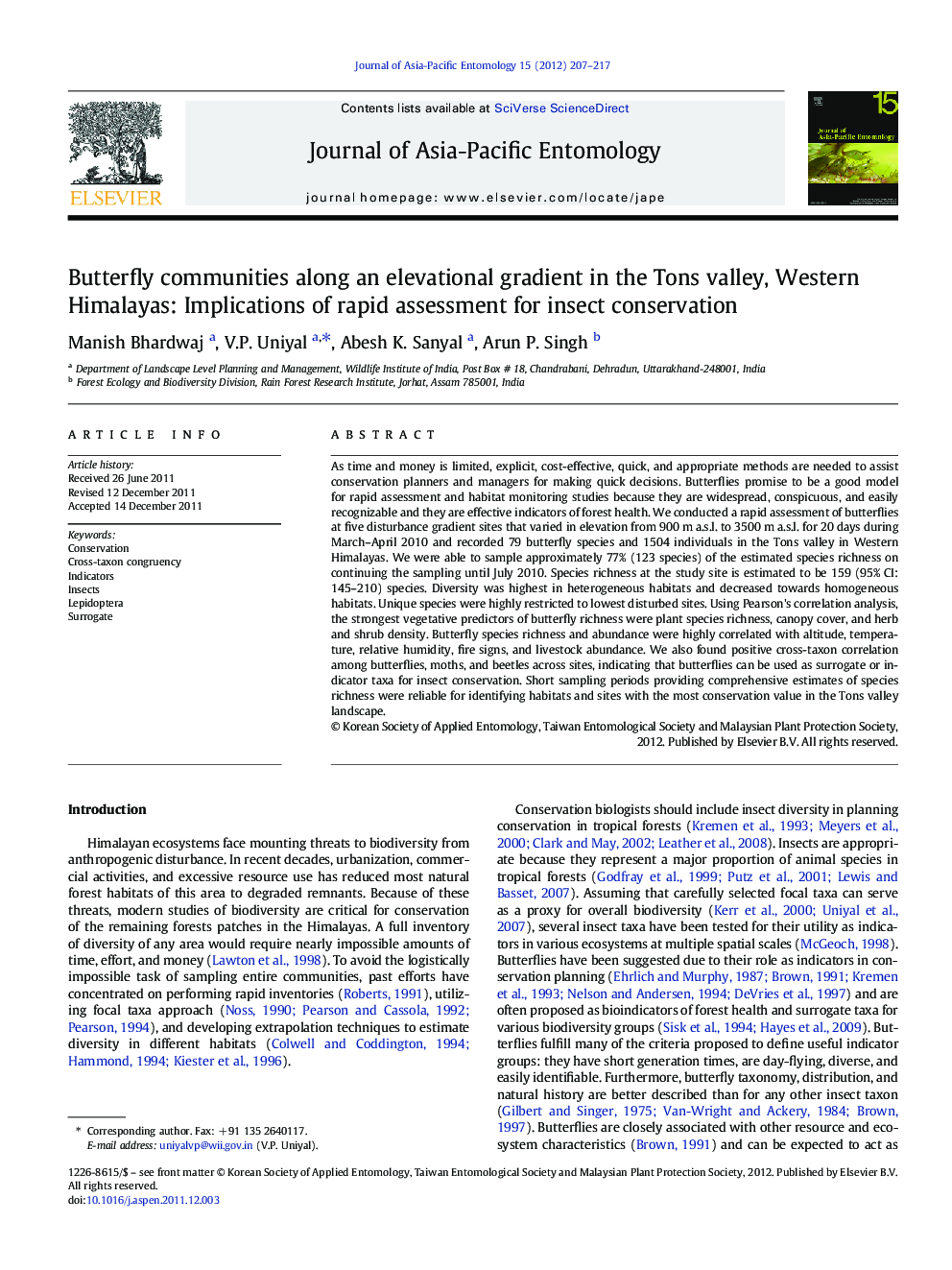| Article ID | Journal | Published Year | Pages | File Type |
|---|---|---|---|---|
| 4524684 | Journal of Asia-Pacific Entomology | 2012 | 11 Pages |
As time and money is limited, explicit, cost-effective, quick, and appropriate methods are needed to assist conservation planners and managers for making quick decisions. Butterflies promise to be a good model for rapid assessment and habitat monitoring studies because they are widespread, conspicuous, and easily recognizable and they are effective indicators of forest health. We conducted a rapid assessment of butterflies at five disturbance gradient sites that varied in elevation from 900 m a.s.l. to 3500 m a.s.l. for 20 days during March–April 2010 and recorded 79 butterfly species and 1504 individuals in the Tons valley in Western Himalayas. We were able to sample approximately 77% (123 species) of the estimated species richness on continuing the sampling until July 2010. Species richness at the study site is estimated to be 159 (95% CI: 145–210) species. Diversity was highest in heterogeneous habitats and decreased towards homogeneous habitats. Unique species were highly restricted to lowest disturbed sites. Using Pearson's correlation analysis, the strongest vegetative predictors of butterfly richness were plant species richness, canopy cover, and herb and shrub density. Butterfly species richness and abundance were highly correlated with altitude, temperature, relative humidity, fire signs, and livestock abundance. We also found positive cross-taxon correlation among butterflies, moths, and beetles across sites, indicating that butterflies can be used as surrogate or indicator taxa for insect conservation. Short sampling periods providing comprehensive estimates of species richness were reliable for identifying habitats and sites with the most conservation value in the Tons valley landscape.
Graphical abstractFigure optionsDownload full-size imageDownload as PowerPoint slideHighlights► Utility of butterflies as indicator of insect diversity. ► We examine patterns in butterfly and insect diversity and distribution. ► Altitude, humidity, plant richness and fire were major diversity predictors. ► Diversity decreased from heterogeneous to homogeneous habitats. ► Rapid assessment is quick and cost-effective tool for conservation managers.
